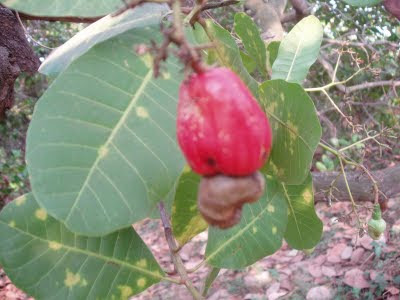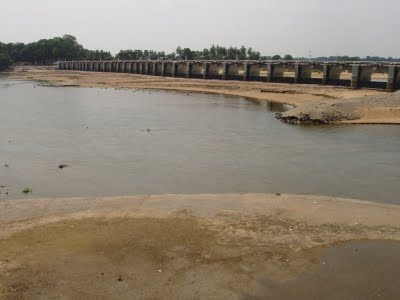A calm, meditative, spiritual Union territory with a strong French flavor - That’s Pondicherry fondly called Pondi. It’s officially back to its original name ‘Puducheri since 2006. (pudu is new and cherri is hamlet so new hamlet in Tamil).
Nothing much has changed in this city, even the changes that I noticed has been for the better.
My first visit to Pondicherry was some 18 years ago with my parents and we had a two night stay there and I visited all the tourist places, but my many subsequent visits to Pondicherry have happened after a noonday siesta, or evening tea when we suddenly decide for an evening outing and drive to Pondicherry Beach from Neyveli and we return back the same eve.
This time we had planned to visit soon after our brunch but what followed was a brunch nap , finally past 4’0 clock we left to pondi, this time Akka(my SIL) who had come down to Neyveli accompanied us.
After negotiating on mud roads fit for rally drivers and passing through tongue twisting villages like Kullanchavidi, Kurinjipadi(one of the Indian handloom cluster) we reached Cuddalore.
From Cuddalore the roads are better towards Pondi. After reaching Pondi, We drove on the toll road and reached Auroville - an experimental universal self-sustaining eco- village rich with handicraft workshops (will make a post of it in detail) which houses the ‘Matrimandir’.
My children had seen it long back when my elder one was around 4 years old, but akka who has been around the world and frequently shuttles between Chennai and Neyveli has never seen Auroville and Pondicherry.
To our bad luck ‘Matrimandir’ was closed (it closes at 4) and now it was around 5.30( we thought it closes at 6) but never the less driving through the woody Auroville is itself a pleasant experience. We drove out of Auroville through the beach road which are lined with antique shops and reached Goubert avenue to find it blocked for traffic (repair works on the already good roads. We parked our car on the Rue( that’s how roads are called in Pondi, by the French name) behind the secretariat and spent the rest of the evening till 7.30 on the rocks of the Bay.
This beach has a promenade like a boardwalk and the shores are rocky. Like other beaches, the waves don’t touch your feet but clashes on the rocks and splashes water to a height making a pretty sight. We love to spend our Pondi evenings looking at the wide expanse of the bay ahead and the historical French buildings behind us.
Ambling along this rocky promenade unfolds your history texts, for this place is a part of many Carnatic Anglo-French wars fought between Robert Clive and Dupleix. My children were excited to see that their history text heroes were on the shores of Pondicherry frozen in stone - statues of Dupleix, Gandhi,Nehru, Subramania Bharati, Joan of Arc, French war memorial etc.
My daughter especially was surprised to find Bastille’s day which was a part of her French revolution lesson was celebrated in Pondi like a festival every July.
You can witness the strong French influence in the buildings that you see, in the layout of the town called ‘grid pattern’, the sprinkle of French you get to hear from the native tamils and from the policemen who were kepis(French style caps). The reason why it is called ‘French Riviera of the east’. All these are the hangover of the French rule of 138 years till 1954 after which it was acceded to the union territory of India. Some natives left with the French to France and some French nationals stayed back here in India during the accession time.
History of Pondicherry ahead
It was known to Roman and Greeks as ‘Poducei’ when it was just a fishing and weaving hamlet which then turned into an important trade route between Rome and the East, the remains of a Roman amphitheatre recently excavated from nearby arikamedu(ariyankuppam) substantiates this.
The Cholas and Pallavas were the first to control when it was called ‘Vedapuri’, followed by the Portuguese, The Dutch ,later the French and the English during the Anglo-French wars struggled for this coramandel piece of land. The French finally managed to win and John Francis Dupleix arrived as Governer general. The French finally rebuilt the city demolished by the British by designing the city French style.
The city was divided by the French into two parts by a canal called Pierre canal. The French side built towards the bay was marked Ville Blanche(European city) and the native side towards the West of Canal was called Ville Noire(Indian side).
A well planned city again , Pondi is laid in a grid pattern. You will find all road turning at right angles and finally reaching Goubert Avenue which displays simple French Architectural buildings. Any repair on the buildings needs permission from INTACH since these buildings are under their care.
The pondy tourism office, pondy handicraft emporium( Pudumai), Aurobindo ashram, French Consulate, Many high end hotels like the Promenade(Hidesign Dilip Kapurs’s), The chief secretariat are on this avenue.
Just a few metres away from the beach side where I was standing, I was surprised to find the Chief secretariat building bang on the road with no high compound walls. It just has a short grilled barricade. It is easily accessible without security from all sides.( or does it have some hidden security alarms and fences –I don’t know). Just the previous week, Pondi CM had formed the new Government and there were no frills like buntings,cutouts, banners. Absolutely no fanfare.
There are not many trees here except some gulmohar trees, but most buildings have profusely flowered bowers like bougainvillea falling all over the high walls and all the lanes and bylanes are named as rue(road) so it goes like Rue Ananda Pillai, Rue sufran, Rue Dumas etc.and most buildings are colored in pastel shades.
The Indian side again consists of Tamils who live in beautiful traditional houses with earthy colors like brown, terracotta red etc., These houses have no high wall compound. They have entrances made of solid wood and are covered with traditional terracotta awnings, which in turn are supported by solid wooden pillars. On either side of the entrance door, they have alcoves called ‘Maadam’ in which diyas are lit in the evenings. The houses have a sit out in the form of ‘Thinnai’ on which weary visitors can sit. The houses have common wall and easily you can jump from one terrace to the neighbours terrace. Many houses are still intact, though some need little repair work.( you can catch these houses while you are on a PT&TDC bus. The roads here are named ‘salai’ (road in tamil). Many big houses have turned into homestays and heritage hotels.
The Indian side and the French side have merged now since the accession and the Pierre canal dividing them is non-descript. Today, However it is more famous for its spiritual Aurobindo ashram and the nearby Auroville commune. It has numerous tourist interests all covered by the tourism department. Numerous resorts offering varied interests are the river cruises at Arikamedu river, backwater cruise at Chunnambar, Deep sea fishing , some creeks are developed as resorts with tree top houses and little cottages on bamboo stilts and also don’t miss a place which is hidden like a treasure chest called ‘Picchavaram’- the second largest mangrove forest in the world, ideal for cruising, boating and bird watching. When I went to Picchavaram a few years back, The drive to the place was more interesting than the destination itself.
There is a steady flow of tourists from foreign countries (not just France) and the weekend partying crowd of Chennai. I’ve heard this is also a test base for products like alcohol (bio-beer) and other beverages besides Goa.
You can come out of Pondi with many souvenirs or memorabilia. Pondi’s handicrafts are available at ‘Pudimai’- the handicraft emporium. It is famous for paper Mache dolls, paper lamp shades, jute items like hammocks,swings, pottery, hand made paper, incense and textile products from Anglo-french textiles and Pontex. (My Mil patronises the pontex towels. They are highly absorbent and dry fast).
It is also famous for leather products. It is the base of the world famous leather brand ‘Hidesign’ owned by Dilip Kapur. His daughter Ayesha was the little Rani mukherjee in the movie ‘Black’.
After whiling away our evening, we refilled our hungry stomachs and our car. This city does not does not levy high taxes since it is a UT, so petrol is cheaper.
We drove out of the calm city, where the simple people are not in a hurry and you will find them more on bicycles than in cars.
It has many restaurants and bay side eateries serving best quality multi- cuisine but beware they also get into holiday mood often, you will find all hotels closed on Deepavali and on many occasions. Atleast, I have come out of Pondi hungry on two occasions with all hotels on my way till cuddalore closed much before 8. Then we have called my Mil back home at Neyveli to keep some ‘Thayir saadam’(curd rice) for us.
Pondi is a must visit place for anybody who loves vacationing and a perfect balm to the souls who are buffeted by the rigours of busy urban life.
Reaching here from Chennai on the East coast Road is a pleasure I’ve heard, though I hav’nt got a chance to travel this route.
check some clicks here
Inspite of my husband’s palm on the forehead situation, he did oblige to stop the car when I took some clicks from my mobile, but unfortunately they got lost when my mobile memory was corrupted. Here are some clicks taken from flashnews

The waves crashing on the rocky shores

A French style building

A traditional tamil home converted into a heritage hotel. Many such homes are converted to homestays or hotel.

This monument is called 'Aayi mandapam' built in memory of the lady who donated her house to supply water to the city during French rule. Built by Napolean III. This building reminds me of Arc de Triomphe when lighted.

Pondi police wearing French caps called 'Kepi'
























